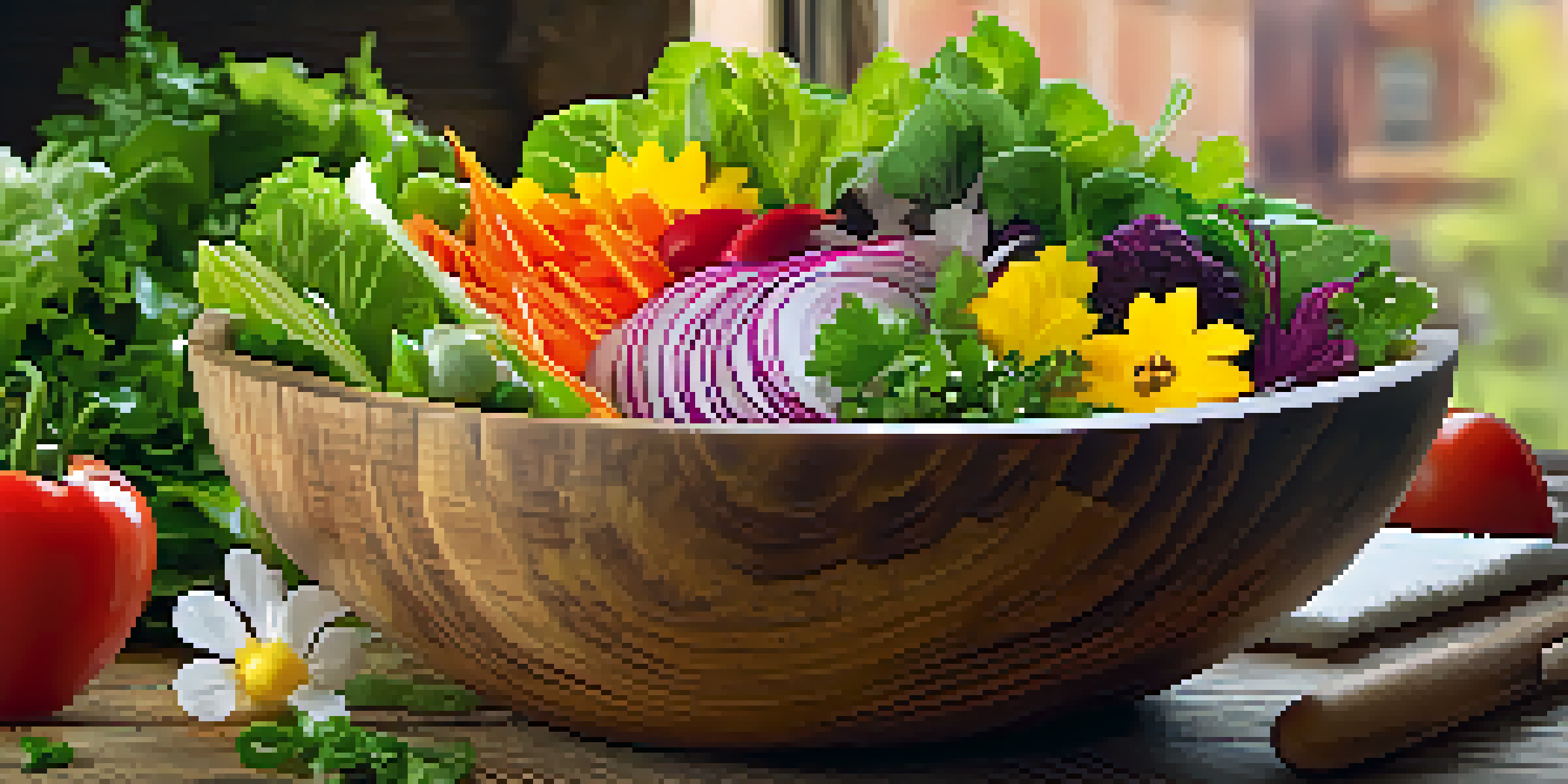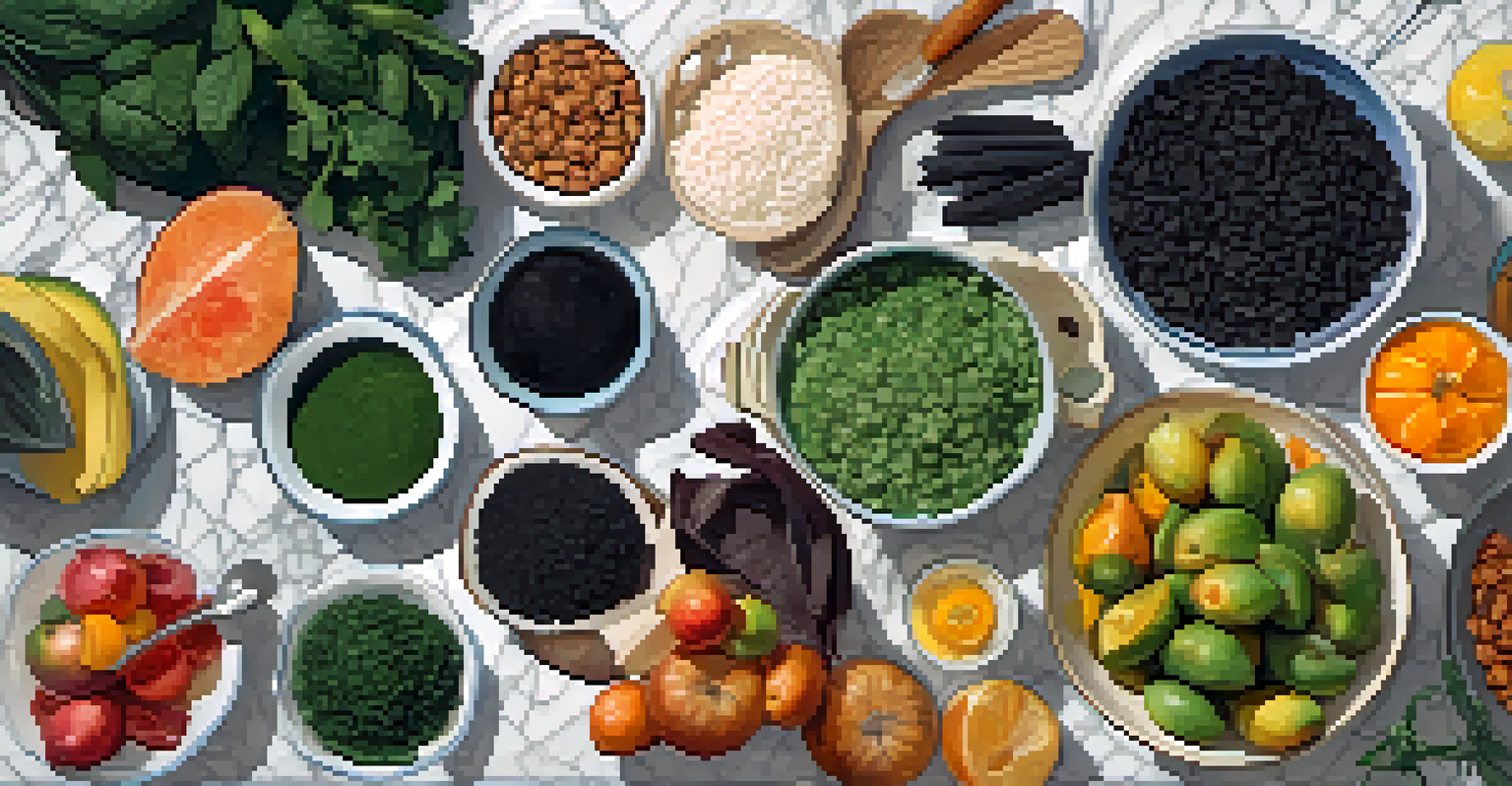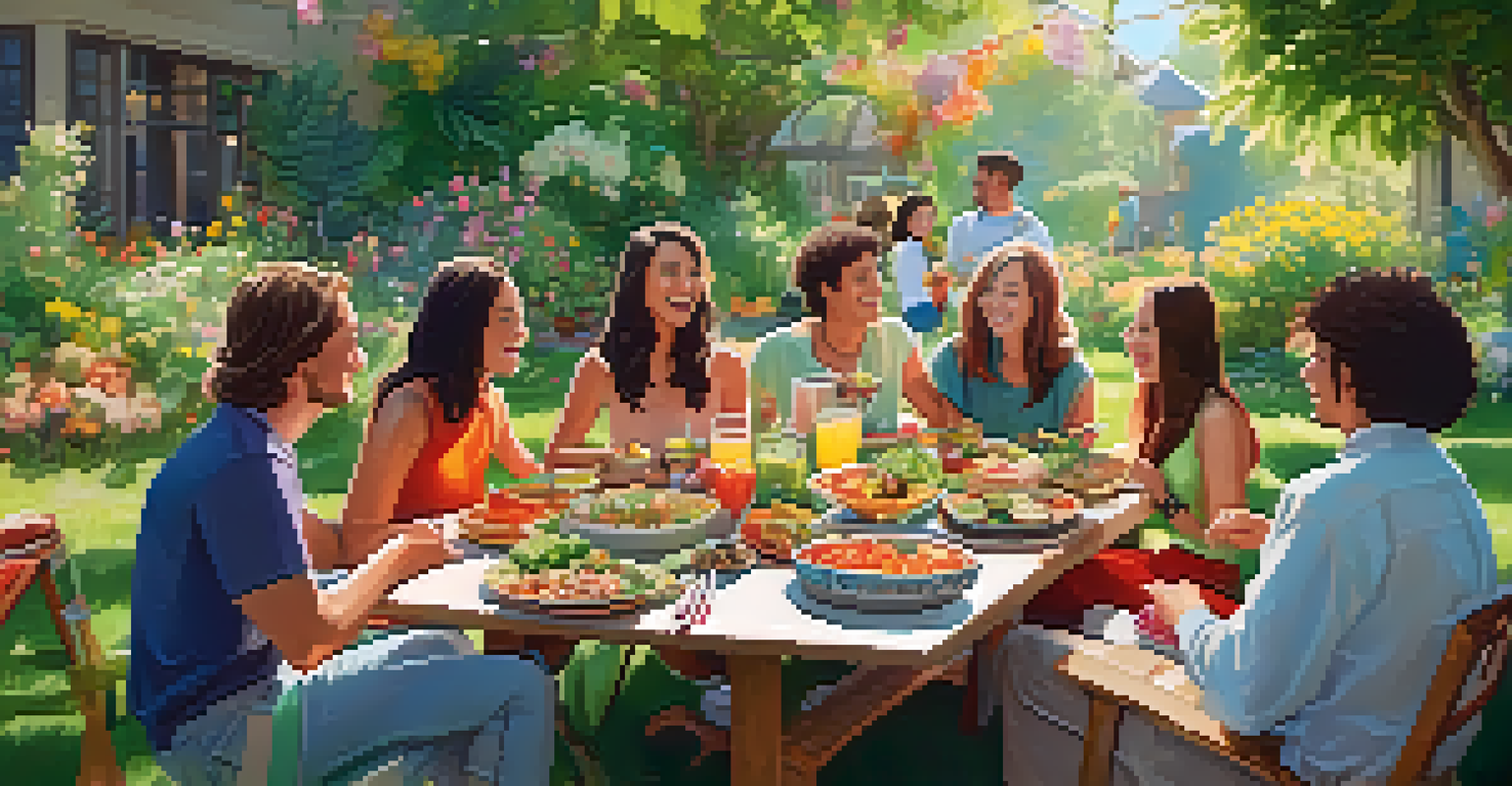Exploring Raw Food Trends in the Age of Social Media Influence

The Rise of Raw Foodism in the Social Media Era
In recent years, raw foodism has gained significant traction, largely thanks to social media platforms. With vibrant photos of colorful salads and smoothies flooding feeds, people are inspired to explore healthier eating habits. The visual allure of raw food makes it an ideal fit for platforms like Instagram and Pinterest, where aesthetics reign supreme.
Let food be thy medicine and medicine be thy food.
Social media influencers play a pivotal role in promoting raw diets. They share not only their meals but also personal stories that resonate with followers, creating a community around this lifestyle. This sense of belonging encourages many to adopt raw food practices, often starting with simple recipes shared online.
Moreover, hashtags like #RawFood and #HealthyLiving facilitate easy access to a wealth of information. Users can discover new recipes, tips, and even raw food challenges, driving engagement and participation in this growing movement. It's a perfect example of how digital culture can foster dietary changes.
The Impact of Influencers on Raw Food Choices
Influencers have the power to shape perceptions about food and health. By showcasing their raw food journeys, they not only promote specific products but also create a lifestyle that many aspire to emulate. This aspirational quality can inspire followers to try raw food, leading to increased interest and sales in related products.

Many influencers share their personal transformations, which can be incredibly motivating. When someone sees a relatable figure thriving on a raw diet, it often sparks curiosity and encourages them to explore this way of eating. This personal touch makes the raw food movement feel accessible and achievable.
Social Media Fuels Raw Food Trends
Platforms like Instagram and Pinterest showcase vibrant raw food visuals, inspiring healthier eating habits.
However, it's essential to approach these influences critically. While many share authentic experiences, others may promote unrealistic standards or products for profit. Understanding the difference is crucial for making informed choices about adopting a raw food lifestyle.
Social Media: A Double-Edged Sword for Raw Food Trends
While social media has amplified the raw food movement, it also presents challenges. The constant barrage of perfect images can lead to unrealistic expectations about health and body image. This pressure can deter some individuals from even trying raw foods for fear of not measuring up.
You are what you eat, so don't be fast, cheap, easy, or fake.
Additionally, misinformation can spread just as quickly as accurate information. With countless self-proclaimed experts sharing conflicting advice, it can be tough for newcomers to navigate the raw food landscape. This highlights the importance of seeking credible sources and professional guidance when pursuing dietary changes.
Despite these challenges, social media continues to be a valuable tool for education and community building. By fostering open discussions and sharing diverse experiences, platforms can help demystify raw food and make it more approachable for everyone.
Trends in Raw Food Ingredients and Recipes
The raw food movement constantly evolves, with new ingredients and recipes emerging regularly. Ingredients like spirulina and activated charcoal are gaining popularity, often highlighted in social media posts for their health benefits. These trendy ingredients not only add nutritional value but also enhance the visual appeal of dishes.
Creative recipes that blend raw food with global cuisines are also on the rise. From vibrant sushi rolls made with cauliflower rice to refreshing vegan tacos, there is no shortage of innovation in the raw food space. These recipes often go viral, encouraging more people to experiment in the kitchen.
Influencers Shape Raw Food Choices
Social media influencers create aspirational lifestyles around raw diets, motivating followers to explore this way of eating.
As these trends continue to evolve, they reflect broader shifts in consumer preferences towards healthier, plant-based options. The raw food movement is not just about the food; it's about a lifestyle that prioritizes well-being and sustainability, which resonates strongly in today's health-conscious society.
Building a Community Around Raw Food on Social Media
Social media has become a powerful tool for building communities around raw food. Groups and forums dedicated to raw diets thrive on platforms like Facebook and Reddit, where members share experiences, recipes, and advice. This sense of community offers support and accountability for those embarking on their raw food journeys.
Challenges like '30-day raw food challenges' encourage participation and foster camaraderie. Participants often share their daily meals and progress online, creating a shared experience that helps maintain motivation. Such initiatives can be both inspiring and educational for those interested in trying raw food.
Moreover, local meetups and events promoted on social media help connect individuals in real life. These gatherings allow people to share their passion for raw food, exchange ideas, and enjoy delicious meals together, further strengthening the community bond.
Sustainability and Raw Food: A Social Media Perspective
Sustainability is a growing concern among consumers, and raw food aligns well with this trend. Many raw food advocates emphasize the importance of sourcing local, organic ingredients. Social media is a great platform for raising awareness about sustainable farming practices and seasonal eating.
Influencers often highlight eco-friendly brands and practices, encouraging their followers to make conscious choices. This can lead to more environmentally friendly shopping habits, as consumers become increasingly aware of their food's impact on the planet. It's a win-win situation for health enthusiasts and the environment alike.
Community and Sustainability Unite
Social media fosters a supportive raw food community while promoting sustainable practices through shared experiences and eco-friendly choices.
By sharing tips on reducing food waste and composting, the raw food community fosters a culture of sustainability. This holistic approach to food not only benefits individual health but also promotes a healthier planet, making the raw food movement more relevant than ever.
The Future of Raw Food Trends in Our Digital World
As social media continues to evolve, so too will the raw food movement. We can expect to see even more innovative recipes, trends, and influencers emerging in the coming years. With the rise of platforms like TikTok, short-form content will likely play a crucial role in how raw food is shared and consumed.
Additionally, virtual cooking classes and workshops are becoming more popular, allowing people to learn about raw food from the comfort of their homes. This accessibility can help demystify raw food and encourage more people to try it, regardless of their cooking skills.

Ultimately, the future of raw food in the age of social media looks bright. As health and wellness continue to gain prominence in our lives, embracing raw food can be a delicious and sustainable way to nourish our bodies and the planet.